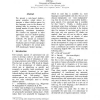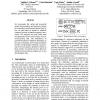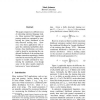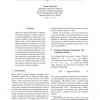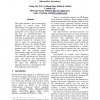ACL
2001
14 years 27 days ago
2001
ACL
2003
14 years 27 days ago
2003
This paper proposes a hybrid of handcrafted rules and a machine learning method for chunking Korean. In the partially free word-order languages such as Korean and Japanese, a smal...
ACL
2001
14 years 27 days ago
2001
Previous research has shown that the plausibility of an adjective-noun combination is correlated with its corpus co-occurrence frequency. In this paper, we estimate the co-occurre...
ACL
2003
14 years 27 days ago
2003
Traditional vector-based models use word co-occurrence counts from large corpora to represent lexical meaning. In this paper we present a novel approach for constructing semantic ...
ACL
2001
14 years 27 days ago
2001
Chunk parsing has focused on the recognition of partial constituent structures at the level of individual chunks. Little attention has been paid to the question of how such partia...
ACL
2003
14 years 27 days ago
2003
We investigate the verbal and nonverbal means for grounding, and propose a design for embodied conversational agents that relies on both kinds of signals to establish common groun...
ACL
2001
14 years 27 days ago
2001
This paper compares two different ways of estimating statistical language models. Many statistical NLP tagging and parsing models are estimated by maximizing the (joint) likelihoo...
ACL
2003
14 years 27 days ago
2003
Often, the training procedure for statistical machine translation models is based on maximum likelihood or related criteria. A general problem of this approach is that there is on...
ACL
2001
14 years 27 days ago
2001
Named entity (NE) recognition is a task in which proper nouns and numerical information in a document are detected and classified into categories such as person, organization, loc...
ACL
2003
14 years 27 days ago
2003
